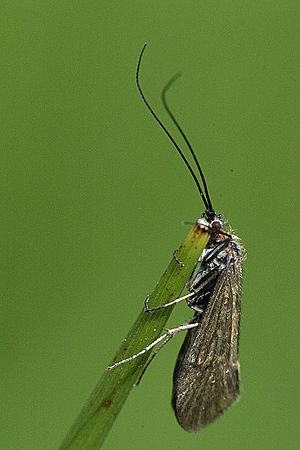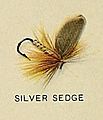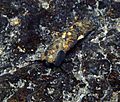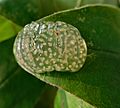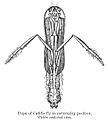Trichoptera facts for kids
The Trichoptera are an order of insects commonly known as caddisflies. You might also hear them called sedge-flies or rail flies. These insects are special because their entire bodies, including their wings, are covered in tiny hairs called setae.
Many caddisfly larvae are amazing builders! They use silk to create protective cases. These cases are often made from small pieces of gravel, sand, twigs, or other natural bits they find. You can usually find these clever builders in clean rivers and streams.
Contents
What Are Caddisflies?
Caddisflies are a group of insects related to butterflies and moths. However, unlike butterflies and moths, caddisflies have hairy wings instead of scaly ones. There are over 14,500 different types of caddisflies found all over the world!
Their Amazing Cases
One of the most interesting things about caddisflies is how their larvae build homes. These larvae live in water and create portable cases to protect themselves from predators. They use silk, which they produce themselves, to glue together materials from their environment.
The materials they use depend on the species and what's available. Some use tiny stones, others use bits of plants, and some even use empty snail shells! These cases are like tiny suits of armor that the larvae carry with them as they move around.
Where Do Caddisflies Live?
Caddisflies are found almost everywhere there is fresh water. This includes rivers, streams, lakes, and ponds. They are a good sign that the water is clean and healthy because many species need unpolluted water to survive.
Adult caddisflies, which have wings, usually live near the water where they grew up. They are often active at night and are attracted to lights.
Life Cycle of a Caddisfly
Caddisflies go through a complete metamorphosis, just like butterflies. This means they have four main stages in their life: egg, larva, pupa, and adult.
Egg Stage
Female caddisflies lay their eggs in or near water. Some species lay their eggs in a jelly-like mass on leaves or rocks above the water. When the eggs hatch, tiny larvae emerge and drop into the water.
Larva Stage
The larva is the longest stage of a caddisfly's life. This is when they live underwater and build their protective cases. They spend their time eating algae, small bits of plants, or even other tiny aquatic creatures. As they grow, they shed their skin several times.
Pupa Stage
When a larva is ready to change into an adult, it seals itself inside its case or builds a new cocoon. Inside this protective shell, the larva transforms into a pupa. The pupa stage is a resting period where the insect develops its wings and other adult features. Some pupae can even swim using special oar-like legs!
Adult Stage
Once the pupa is fully developed, it swims to the surface of the water or crawls out onto a plant. The adult caddisfly then emerges from its pupal skin. Adult caddisflies live for a short time, usually only a few weeks. Their main job is to find a mate and lay eggs, starting the life cycle all over again.
Images for kids
-
Eocene fossil in Baltic amber, Lithuania (44 million years ago)
-
"Silver Sedge" fishing fly mimicking Lepidostoma caddisfly
-
Parachiona picicornis adult emerging from aquatic pupa
See also
 In Spanish: Tricópteros para niños
In Spanish: Tricópteros para niños


